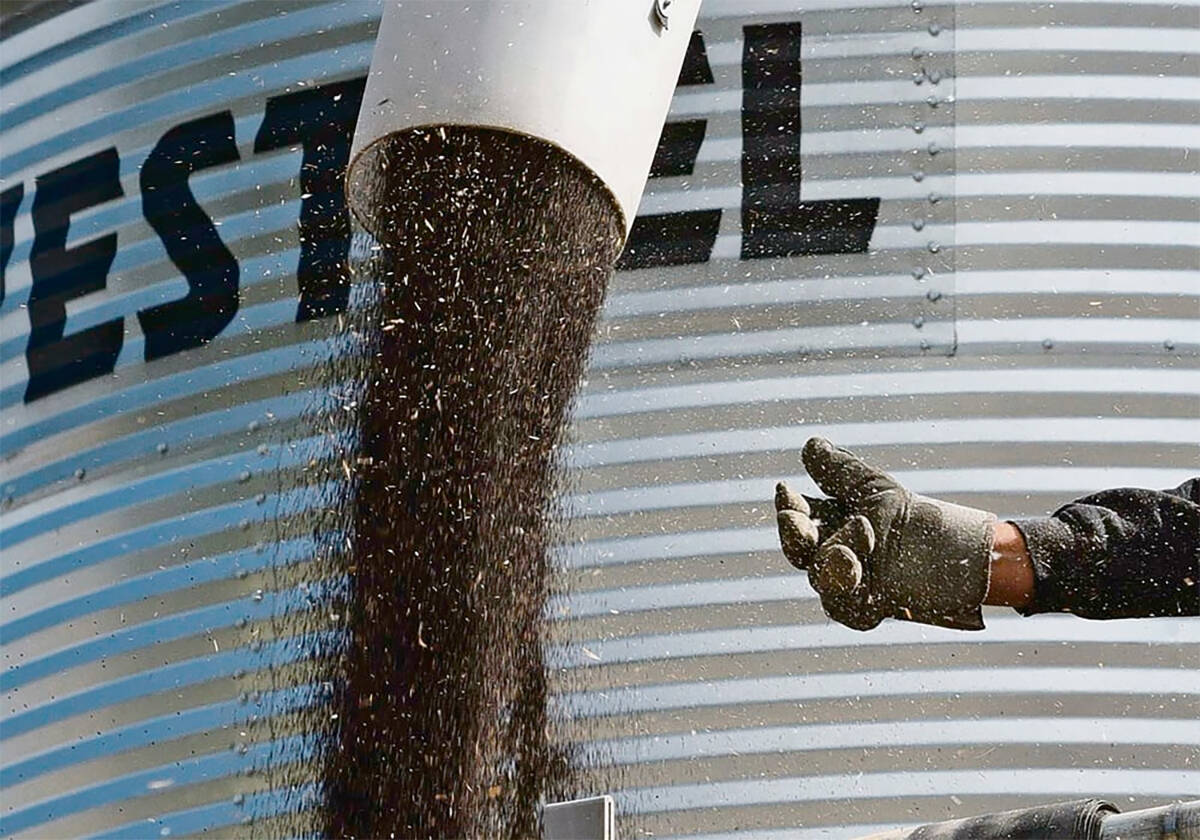Researchers in North Dakota are on the cusp of offering better protection to the world’s wheat crops against a deadly fungus that threatens yields around the globe.
Scientists at the U.S. Department of Agriculture’s Cereal Crops Research Unit in Fargo have developed a line of wheat containing the Sr39 gene, which is highly resistant to Ug99 and eight other types of stem rust.
“This is a major gene. It should be very useful,” said Steven Xu, a research geneticist at the facility.
Ug99 is a highly virulent race of stem rust that emerged in Uganda in 1999 and has since spread into the Middle East. Researchers say it is only a matter of time before the new strain infects North American wheat crops.
Read Also

Farmers urged to be grain-safe this fall
Working around grain bins comes with risk, from farmers falling to drowning in grain: Experts have five tips to help avoid grain-related accidents this harvest.
It has already overcome the stem rust resistance contained in Sr31, the predominant gene that has protected wheat lines against the disease for years. New variants of the rapidly evolving Ug99 fungus have also overwhelmed the Sr24 and Sr36 resistance genes.
The upshot is there are few commercial wheat lines that have any mechanism for fighting off the disease and many of those only offer moderate resistance.
The last severe North American stem rust epidemics were in 1935, 1953 and 1954.
In 1954, rust and bad weather pushed the Saskatchewan average wheat yield down to about 10 bushels per acre, half the five-year average.
In those years, up to half of the wheat crops were destroyed in North Dakota and Minnesota and at least 20 percent of the crop was lost in South Dakota.
Xu and his team have found a way to refine a line of wheat developed by Agriculture Canada that contained the Sr39 gene.
The original line was deemed useless as breeding material because when the Sr39 gene was transferred over from goat grass, it brought along a host of undesirable traits.
“The plant looked very ugly,” said Xu.
It was late maturing, low yielding, had poor fertility characteristics, undesirable quality traits and was subject to lodging.
Xu’s job was to keep the rust resistance trait while eliminating the undesirables.
“We tried to get rid of the junk,” he said.
Xu used a non-GM breeding technique involving a line of Chinese spring wheat developed in the 1950s to shorten the Sr39 chromosome segments in the wheat lines.
He said further testing is needed before the line can be released to breeders. Due to quarantine concerns, his lab is unable to test to make sure the new line is still resistant to Ug99. That work will be done in a lab in Minneapolis.
“If everything goes smoothly, next summer we will release the stock,” he said.
It will likely be another three to five years before commercial varieties will be in grower hands as breeders will have to cross the new research material with commercial lines.
Tom Fetch, stem rust pathologist with Agriculture Canada, said the material would be of interest to Canadian breeders if there were no other big agronomic drawbacks.
He is familiar with the Sr39 gene and agrees that it offers major resistance to Ug99 and has performed well in field tests conducted in Kenya, where the fungus has killed 80 percent of wheat crops in some areas.
“It’s another significant step forward to solving the bigger problem,” said Fetch.
“That’s another piece in the puzzle.”
Xu warned that the Sr39 gene could be defeated within five years by the rapidly evolving Ug99 fungus. The long-term solution is to create lines containing four or five such genes.
“We need more (resistance genes),” said Xu.
Fetch said it is misleading to suggest the gene will succumb to the disease within five years. It could offer resistance for 50 years because the pathogen finds some genes harder to overcome than others.
But he agreed that the best strategy is to stack two or three highly resistant genes into a plant. That is the approach Agriculture Canada is taking in its efforts to combat Ug99.















